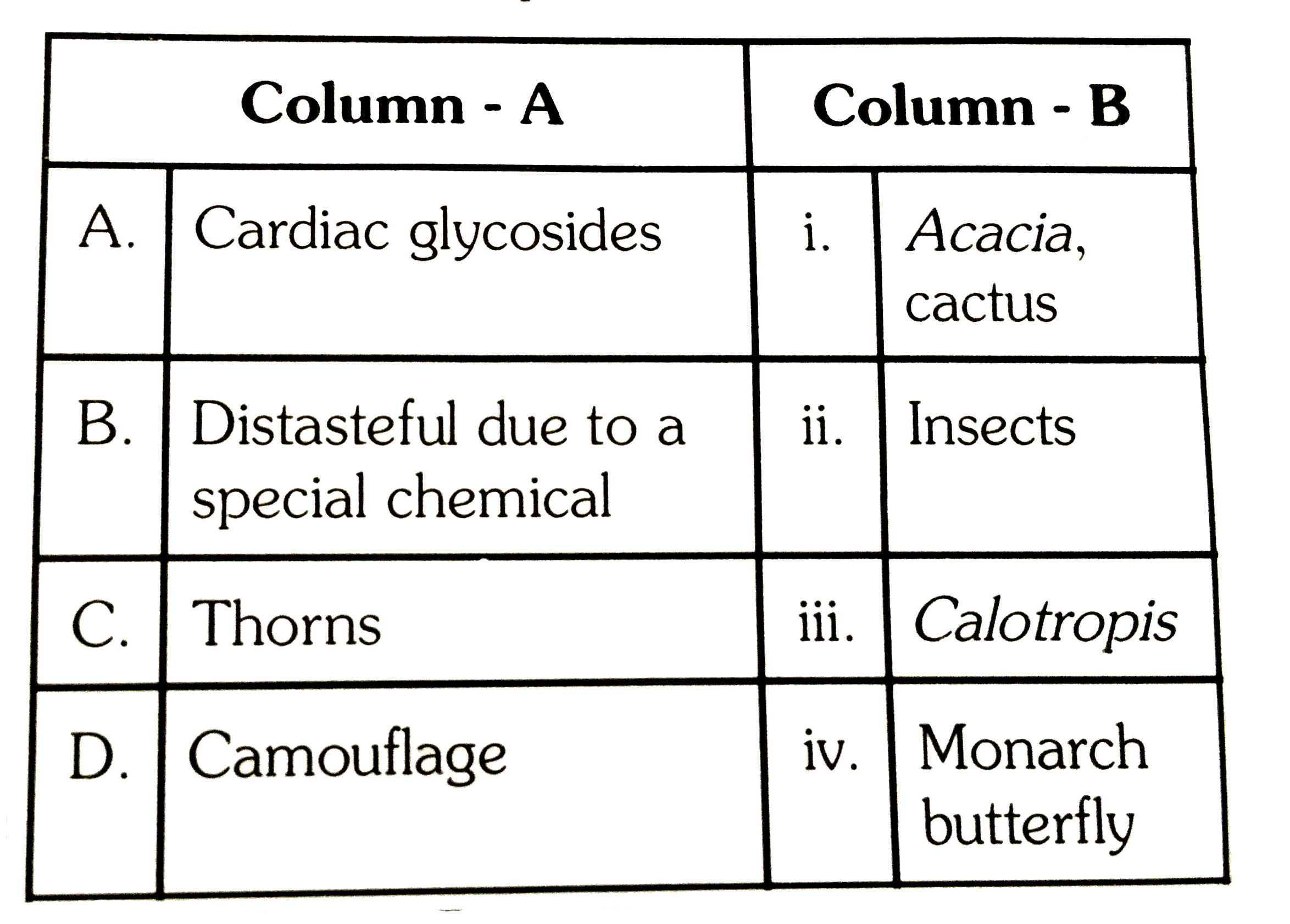This uses mimicry as a defence mechanism
Date Palm
Caladium
Opuntia
Jatropha
The correct Answer is:B
Step-by-Step Solution:
1. Understanding the Question: The question asks which of the given options uses mimicry as a defense mechanism. Mimicry in biology refers to the phenomenon where one organism resembles another, providing it with some form of protection or advantage.
2. Identifying the Options: The options provided are:
- A) Dead Palm
- B) Chaladium
- C) Opuntia
- D) Jatropha
3. Defining Mimicry: Mimicry can be classified into different types, such as Batesian mimicry, where a harmless organism resembles a harmful one to avoid predation.
4. Analyzing Each Option:
- Dead Palm: There is no significant evidence that Dead Palm uses mimicry as a defense mechanism.
- Chaladium: This plant exhibits Batesian mimicry. The leaves of Chaladium resemble the damage caused by larvae of mining moths. This resemblance prevents female moths from laying eggs on them, thus protecting Chaladium.
- Opuntia: This plant does not exhibit any known mimicry that serves as a defense mechanism.
- Jatropha: Similar to Opuntia, Jatropha does not show mimicry as a defense mechanism.
5. Conclusion: Based on the analysis, Chaladium is the only option that uses mimicry as a defense mechanism. Therefore, the correct answer is B) Chaladium.
- A) Dead Palm
- B) Chaladium
- C) Opuntia
- D) Jatropha
- Dead Palm: There is no significant evidence that Dead Palm uses mimicry as a defense mechanism.
- Chaladium: This plant exhibits Batesian mimicry. The leaves of Chaladium resemble the damage caused by larvae of mining moths. This resemblance prevents female moths from laying eggs on them, thus protecting Chaladium.
- Opuntia: This plant does not exhibit any known mimicry that serves as a defense mechanism.
- Jatropha: Similar to Opuntia, Jatropha does not show mimicry as a defense mechanism.
Topper's Solved these Questions
- FRUIT AND SEED DISPERSAL BOOK - DINESH PUBLICATION ENGLISHCHAPTER - FRUIT AND SEED DISPERSAL EXERCISE - CHECK YOUR GRASP
10 Videos
- FLOWERBOOK - DINESH PUBLICATION ENGLISHCHAPTER - FLOWEREXERCISE - MULTIPLE CHOICE
258 Videos
- GENETIC BASIS OF INHERITANCEBOOK - DINESH PUBLICATION ENGLISHCHAPTER - GENETIC BASIS OF INHERITANCEEXERCISE - Check your Grasp
30 Videos
Similar Questions
Knowledge Check
Assertion: DNA segments can be excised by 'molecular scissors' or 'chemical scalpels' that biotechnologists call restriction enzymes
Reason: Restriction enzymes are synthesised by microbes as a defence mechanism and are specific endonucleases which can cleave double-stranded DNA.AIf both Assertion and Reason are true and the Reason is the correct explanation of the Assertion.BIf both Assertion and Reason are true and the Reason is not the correct explanation of the Assertion.CIf Assertion is true but the Reason is false.DIf both Assertion and Reason are false.Assertion: Macrophages are multipurpose cells of the body's defence mechanism.
Reason: They carry on phagocytosis, display the antigens of the engulfed microbes to the lymphocytes and secrete interleukin-IAIf both Assertion and Reason are true and the Reason is the correct explanation of the Assertion.BIf both Assertion and Reason are true and the Reason is not the correct explanation of the Assertion.CIf Assertion is true but the Reason is false.DIf both Assertion and Reason are false.
Cause of mimicry is
View SolutionMark the important defence mechanism in plants against herbivour:-
View SolutionWhat is innate immunity? Differentiate between non-specific and specific defence mechanism.
View SolutionName important defence mechanisms in plants against herbivory.
View SolutionMatch the column regarding defence mechanisms adoped by prey species to be protected from predators.

View SolutionFollowing are the functions of a particular hormone:
(a) controller of circadian rhythm in humans
(b) helps in pigmentation, metabolism, menstrual cycle
(C ) controls the defence mechanism of the body
Name the hormone.
View Solution
